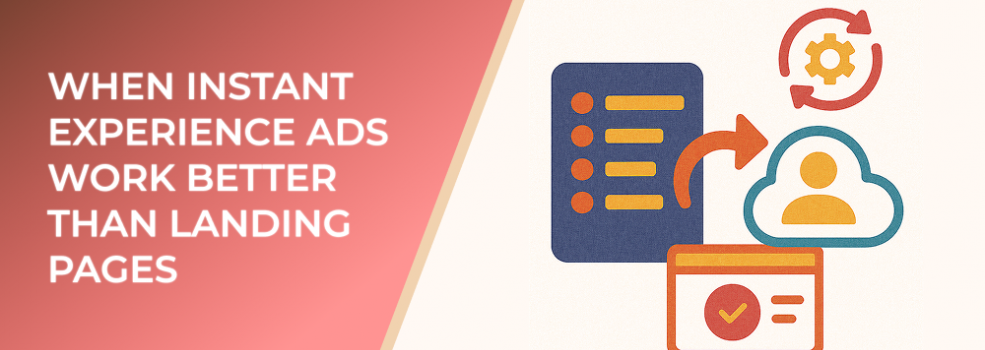Custom audiences are only as good as their recency and hygiene. People change devices, emails, and behaviors; lists decay; match rates shift. In this guide, we’ll map the optimal refresh cadence for each audience type, share directional benchmarks and stats, and give you a practical 30/60/90‑day plan to automate refresh in LeadEnforce.
Why Refresh Cadence Matters (Key Stats)
-
Permissioned lists commonly decay ~20–30% per year; even healthy files can drift 0.5–1% per week if not replenished.
-
Formatting errors (country codes, casing, punctuation) can reduce match rates by 10–25%—fresh uploads with corrected formatting often recover lost reach.
-
Multi‑identifier files (email + phone) typically see +8–20 percentage‑points higher match rates than email‑only uploads.
-
Teams that move from manual monthly to automated weekly refresh for high‑velocity sources report 10–20% lower CPA on remarketing due to cleaner pools and less fatigue.
Recommended Refresh Cadence by Source
(Use the tighter option if you spend heavily, have rapid customer flow, or run short buying cycles.)
1) Website Pixel/SDK Audiences
-
Behavioral windows (Viewed Product, Added to Cart, Initiate Checkout):
-
Retention windows should mirror decision cycles: 0–7 days, 8–30 days, 31–90 days.
-
Refresh cadence: these are event‑based and roll automatically, but audit weekly to ensure tags and events fire correctly.
-
-
High‑intent segments (Cart Abandoners, Lead Initiators):
-
Audit frequency caps weekly and validate exclusions of recent converters within 24–48 hours.
-
2) Customer Lists (Buyers, Subscribers, LTV Segments)
-
High‑velocity stores / subscriptions: every 7 days (or continuous sync).
-
Moderate velocity: every 14 days.
-
Low velocity/B2B: every 30 days.
-
Always deduplicate and keep the freshest consent timestamp.
3) Lead Lists (MQL/SQL, Trial Users, Webinar Signups)
-
Active leadgen: 7 days; move to 3–4 days during launches.
-
Evergreen forms: 14 days minimum; stale leads (>90 days) often underperform—segment them separately.
4) App Users (MAIDs, In‑App Events)
-
Active apps: continuous or 7‑day sync for recency‑based cohorts (D0–D7, D8–D30, D31–D90).
-
Churn re‑engagement: rebuild cohorts every 14 days to maintain accuracy.
5) Offline Conversions / POS Data
-
High volume retail: 7 days to capture in‑store buyers and suppress purchasers quickly.
-
Low volume: 14–30 days, aligned with reporting availability.
6) Suppression Lists (Recent Buyers, Refunds/Chargebacks, Employees/Test)
-
Recent buyers & refunds: daily or 48‑hour sync to prevent wasted spend and messaging errors.
-
Employees/test accounts: update weekly or whenever staff changes occur.
How to Know It’s Time to Refresh (Diagnostic Triggers)
-
Match rate drops > 5–10 pp vs. your 30‑day median.
-
Net audience delta negative for two consecutive weeks (Adds – Removals – Decay < 0).
-
Frequency rising while CTR and conversions fall—classic sign of stale, shrinking pools.
-
Recency mix weak: < 40% of the audience added in the last 60 days.
-
Spike in invalids: > 2% invalid formats after upload indicates a need for hygiene and re‑export.
Hygiene Before Every Refresh
-
Normalize identifiers (emails lowercase/trimmed; phones to E.164; Unicode normalization).
-
Hash with SHA‑256 (UTF‑8, lowercase hex) after formatting.
-
Deduplicate across sources using a stable person key (Email → Phone → MAID).
-
Preserve consent & last‑active dates; use them for segmentation and exclusions.
Cadence by Campaign Objective
-
Prospecting with Lookalikes: refresh underlying seed monthly; weekly if you acquire customers at scale. Use 0–30 day high‑value buyers or activated users as seeds.
-
Mid‑funnel Engagement: ensure engagement audiences (video viewers, engagers) roll with 7–30 day windows; review weekly.
-
Conversion/Remarketing: prioritize daily suppressions and 7–14 day refresh of eligible pools.
LeadEnforce Automation Blueprint
-
Connect sources (CRM, checkout, POS, lead forms).
-
Define refresh schedules per audience: 7‑day (high‑velocity), 14‑day (moderate), 30‑day (low).
-
Enable data hygiene rules and deduplication before each sync.
-
Track match rate, recency mix, net delta, frequency in a weekly dashboard.
-
Set alerts if match rate drops > 5 pp or suppressions fail to update within 48 hours.
30/60/90‑Day Plan
Days 0–30 (Stabilize)
-
Audit all audience sources and current cadences.
-
Implement hygiene standards and daily suppressions.
-
Set 7/14/30‑day schedules by source; baseline KPIs (match rate, net delta, CTR, CPA).
Days 31–60 (Optimize)
-
Promote multi‑identifier uploads (email + phone) where consented.
-
Refresh lookalike seeds; launch 1–3% tiers, then 5–10% if CPA stays within ±15% of target.
-
Rotate creatives; hold prospecting frequency ≤ 6–8 / 7 days.
Days 61–90 (Scale & Sustain)
-
Expand sources (loyalty, events, offline).
-
Automate monthly seed rebuilds and weekly audits.
-
Add alerting for drops in match rate or recency mix.
Troubleshooting
-
Low delivery after refresh: list too small—widen recency window (e.g., 60 → 90 days) or add identifiers.
-
CPA rises: verify suppressions; reduce frequency; rebuild lookalikes from fresher cohorts.
-
Match rate < 40%: re‑check formatting, hashing, and file mapping; enrich with phone numbers where consented.
KPI Checklist (Copy/Paste)
-
Match rate by identifier ≥ target (consumer 60–80%+ typical)
-
Net audience delta positive for last 2 weeks
-
≥ 40% of audience added in last 60 days
-
Suppressions updated within 48 hours
-
Refresh cadence set: 7/14/30 days by source
-
Frequency within caps per stage
Suggested Reads from the LeadEnforce Blog
-
Audience Hygiene 101: Formatting, Hashing, and Deduplication Best Practices
-
Why Custom Audiences Shrink Over Time (and How to Rebuild Them)
-
Lookalike Audiences: How to Seed, Train, and Scale
Takeaway
Refreshing isn’t about arbitrary dates—it’s about data velocity, consent freshness, and campaign intent. Adopt source‑specific cadences, automate hygiene and suppressions, and watch the core indicators (match rate, recency mix, net delta). With LeadEnforce automation, you’ll keep audiences accurate and performance consistent while you scale.

